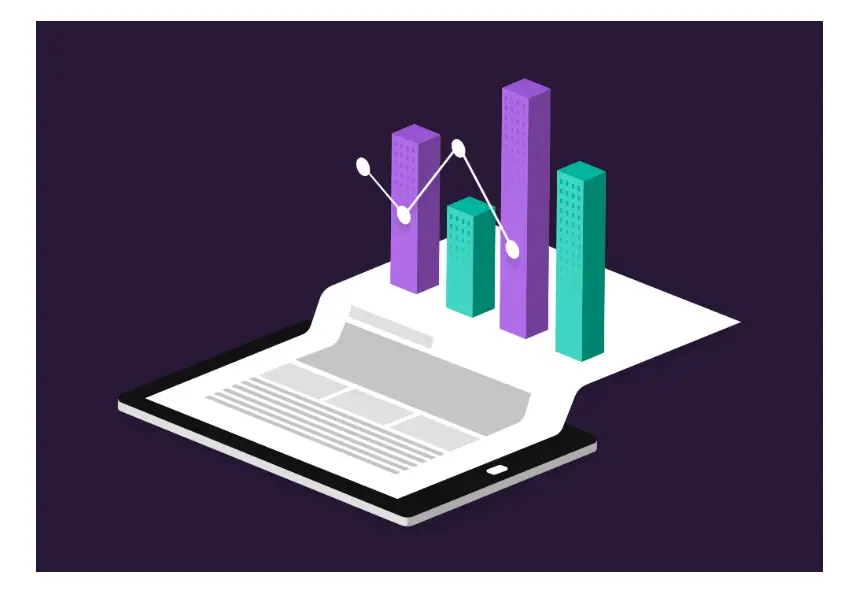Social Media Analytics is part of social analytics, which is the collection of data, raw information in the form of facts & figures from the social media platform, and then converting the data after processing into structured insights.
Leading to the extraction of useful information, which is essential for making business decisions and increasing customers’ loyalty toward a particular brand or product. The most common use of social media analytics is to mine customer sentiment to support customer service activities. Social media analytics have some main objectives. Social media analytics amplify the business presence, reduce customer service costs with a proper social media monitoring process, and also track public opinion for a particular product or business division.
Descriptive analysis, Prescriptive analysis, Diagnostic analytics & Predictive analytics are the various forms of social analytics. This may vary from business to business, depending upon their business objectives.
Social Media Data Analysis is Usually Represented in The Following Ways:
Pie charts: They are used to depict the breakdown of one-dimensional data which is related to the whole.
Bar charts: These help in comparing the different sets of data.
Line charts: They are best for continuous data, which keeps on changing over time.
Scatter plots: These illustrate the current trends or the direction of the data.
Importance of Social Media Data Analytics Tools in 2023
Track your progress: It shows us how far the business has grown or traveled from the place where we started. In other words, we can say it helps us to analyze important information such as analyzing followers, and the reach of the posts, and compare the results over different social media platforms.
Decision making: It helps in the decision making be it by deciding which right analytic tool to use or by informing about the current trends, tastes & preferences of the consumer so that the product can be designed or innovated accordingly.
Cycle: Social media analytics involves a cyclical process that starts with the identification of the right source of information followed by extraction, cleaning, analysis, visualization, and then finally ends up with the interpretation or the consumption of the information obtained from the visual data.
Social media analytics also helps to identify real-time conversations happening on social media about a product. Any organization with proper social media as an awareness generation tool by sharing their knowledge and experience.
Most Common Tools Used for Social Media Marketing Analytics:
There are a variety of social media analytics tools to help marketing experts do all the analysis. They can use multiple channels, while others focus on particular networks such as Facebook /Twitter etc. All tools are useful for converting qualitative data into quantitative format as well as social media monitoring work.
Here are The Top 5 Data Analytics tools Used for Social Media Analytics
1. Followerwonk
One of our favorite Twitter tools, Followerwonk shows you detailed breakdowns of your followers and activity. Click on the Analytics tab, enter a Twitter username (either yours or someone else’s), and view information on followers and following. See stats like when your followers are online when you typically post, and how your followers fall into categories like social authority, activity, total tweets, and follower count.
2. Viralwoot
This Pinterest tool helps with much beyond analytics. You can schedule pins, promote pins, and gain new followers all through Viralwoot. The analytics on the free plan shows you basic account metrics (boards, pins, followers, etc.), Pinterest stats (Pinfluence, reach, activity, and engagement scores), and how to increase those stats. Paid users have more comprehensive analytics, including data on the best day and time to post and best-performing colors.
3. Quintly
The free plan on Quintly lets you access analytics for up to three Facebook Pages, offering stats on the main engagement metrics (likes, comments, shares) plus stats on follower growth. When you add multiple pages, you can quickly see at-a-glance how the pages compare on the graphs.
4. Cyfe
The robust features at Cyfe let you create a custom dashboard filled with stats from dozens of marketing tools. Its social media section lets you sync up all the major networks and pull overview reports or individual reports for the accounts you manage and the accounts you want to follow.
5. Keyhole
Keyhole offers a free yet powerful preview of its hashtag, keyword, and account tracking service. For hashtag and keyword tracking, it provides a wealth of information such as reach, top posts, the share of posts, and more. For account tracking, you can monitor your brand’s or competitor’s engagement on Twitter, Instagram, or Facebook.
And many more. With the help of social media analytics tools, organizations can identify social leads on a daily basis. The potential leads can be segregated into different segments based on the conversation themes. This helps to understand the demographics of the prospectus.







